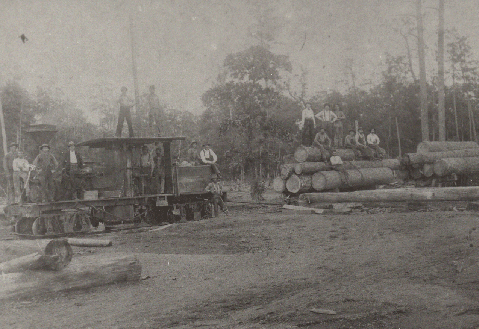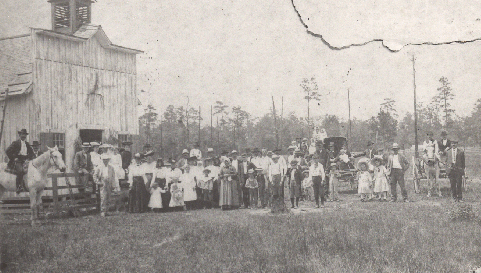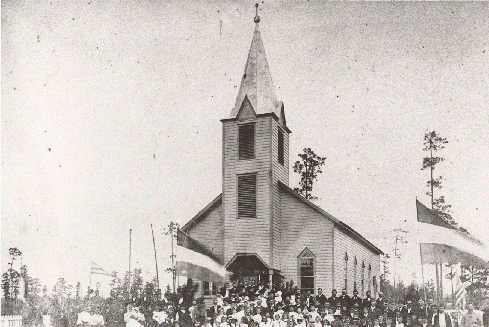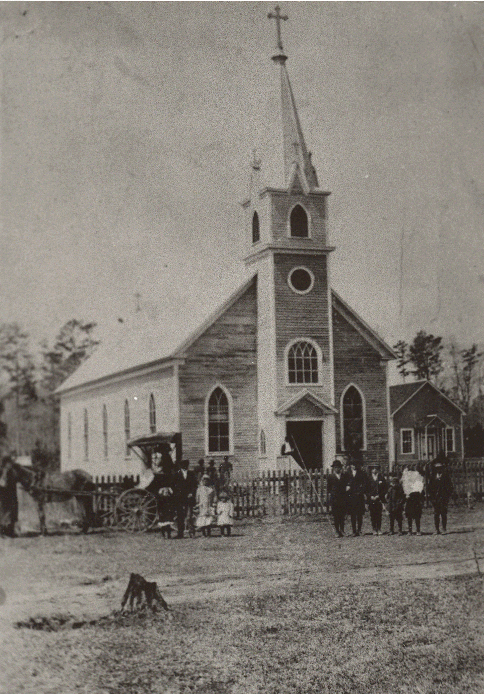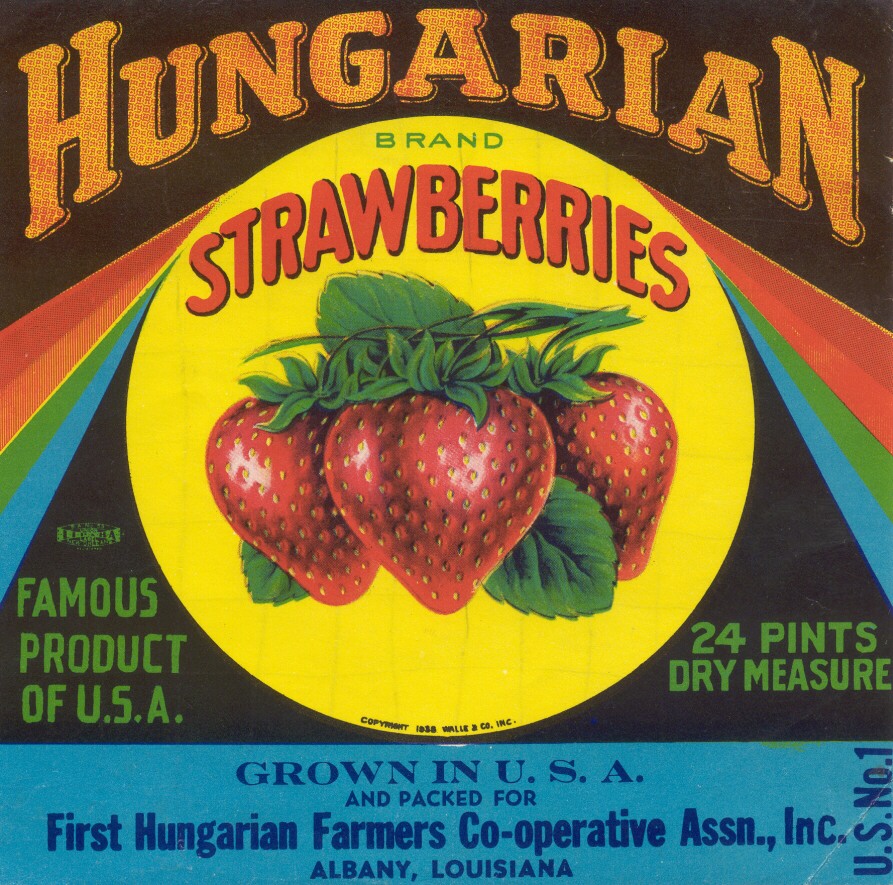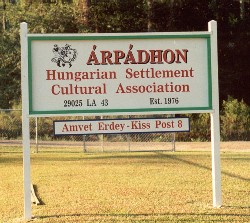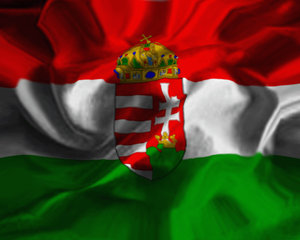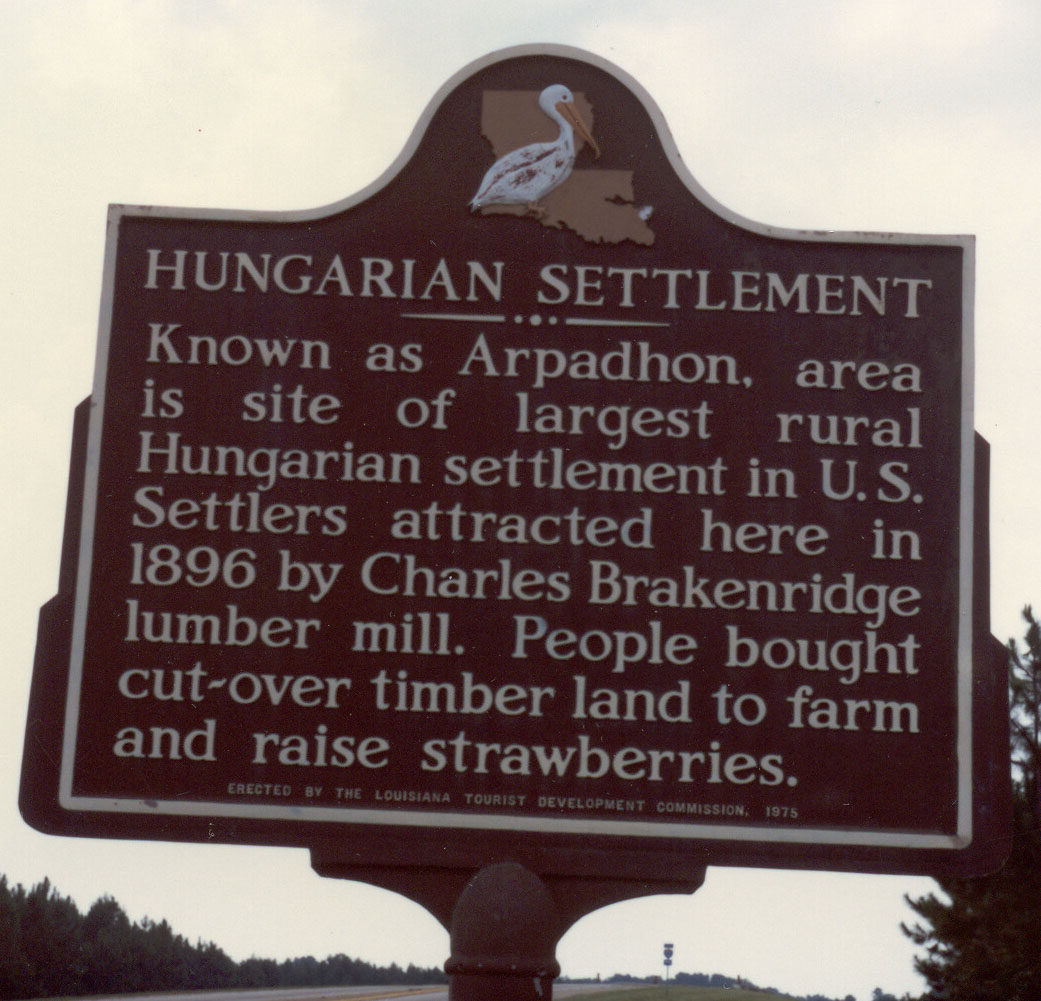
Community History
(The above photo contains the founders of the Arpadhon community. Julius Bruskay is on the far left. Adam Mocsary and Theodore Zboray are on the right. Father Grosse, center, was one of the first priests to minister to the Hungarians near what is now Albany, Louisiana.) The Baton Rouge, Hammond, and Eastern, a railroad connecting Hammond and Baton Rouge, built in 1907-08, slowed the commercial growth of Arpadhon. A train depot named Albany, established about two miles north of the Hungarian community, caused a slight shift in population. Albany grew into a small town, which became the center for local commerce. Shortly after the completion of the railroad through Albany, the local Hungarians started a movement to change the name of the town to "Balaton," which is the name of a famous fruit growing region and the largest lake in Hungary. They petitioned to the railroad company, who denied their request for the name change. In 1916, the local branch of the Brackenridge Lumber Company closed, which made more land available for settling. This prompted the local Hungarians to practice full-time farming as their community grew throughout the 1920s. Before the turn of the century, some of the local residents had decided to experiment with strawberries and found they could be grown fairly easily in the mild Louisiana climate. By the late 1930s, the tight-knit ethnic Hungarian community south of Albany was well on its way to becoming Americanized. One resident stated, "Until the Thirties and Forties, the Hungarian saying in the home was you have to marry a good Hungarian girl and vice versa. For a while, this did happen." Another resident stated that, "with the schools...and with the war, the Hungarians got out and started mixing with everyone, started assimilating real well, too well, with the rest of the world." World War II appears to be a crucial turning point concerning the integration of the Hungarians of Albany into American society. Marriages with those other than Hungarians became a more common occurrence after the war, and the use of the Magyar language began to fade. In 1976, the Bicentennial of the United States triggered a cultural awareness throughout the country, including Louisiana. In an attempt to preserve and promote the Hungarian culture of the Albany area, some of the local Magyar descendants established the Arpadhon Hungarian Settlement Cultural Association (AHSCA). Very little Hungarian is spoken in or near Hungarian Settlement today. Any such conversations take place exclusively among the elderly residents, who tend to blend it with a little English. The Arpadhon Hungarian Settlement Cultural Association continues its efforts to preserve and promote the Hungarian culture of the Albany area. Members of this association include some of the descendants of the first Hungarian immigrants to come to the area and a few non-Hungarians who are interested in perpetuating the Magyar culture. On the first Saturday of every October, the AHSCA sponsors the annual Hungarian Harvest Dance, which is currently held at the American Legion Hall on La. Hwy. 43, near Springfield. Hungarian Settlement celebrated its centennial on Saturday, October 5, 1996. The AHSCA sponsored the day's events that began with a Hungarian dinner at their association hall (former Erdey-Kiss Post Amvets Hall) just south of Albany. The dinner included cabbage rolls, kolbasz (Hungarian sausage), cucumber salad, homemade bread, and Hungarian pastries. A Hungarian folk music ensemble from New York, called Eletfa, provided entertainment for the dinner crowd. All other events took place at the American Legion Hall on Hwy. 43 near Springfield. A canopy of vines and fruit hung from the ceiling of the hall, which was decorated with streamers of red, white, and green, the national colors of Hungary. The centennial ceremony began at 2:30 P.M. when the elderly citizens (ages 75 and older) of Hungarian descent were recognized and treated to a concert of Hungarian folk music performed by Eletfa. The evening events began with a variety of Hungarian folk dances performed by the Baton Rouge International Folk Dancers, led by Vonnie Brown. The evening culminated with the traditional Hungarian Harvest Dance, which has been passed down for three generations in the community. Local residents, dressed in white costumes decorated with ribbons of red, white, and green, performed a series of dances beneath the canopy of fruit in the center of the hall. When the Harvest Dance ended, onlookers were invited to "steal" the fruit hanging from the ceiling as they did in the early years of the Hungarian Settlement. Though much has changed since 1896, and the community has assimilated into American society, the descendants of the rugged individuals who first came to the area continue to take pride in their ethnic roots. The preparation of Hungarian-style food is a good example of the continuation of the Magyar culture of the region. Many use traditional recipes that they learned from their parents and grandparents. The AHSCA has been instrumental in preserving this aspect of the Hungarian culture of the Albany area. The AHSCA compiled community recipes and published a cookbook in 1992 that includes many local ethnic family recipes. To date, it has been reprinted eight times and over 1,300 copies have been sold. Interestingly enough, the surrounding area has been influenced to the extent that some who are not of Hungarian descent have taken the initiative to learn how to prepare some of the Hungarian dishes. The AHSCA also perpetuates and promotes the preservation of the Magyar cuisine of Albany by offering Hungarian dinners for sale at least once a year, usually in conjunction with the annual Hungarian Harvest Dance. Currently, there are at least 100 members in the AHSCA. Many live out of town and some live out of state. 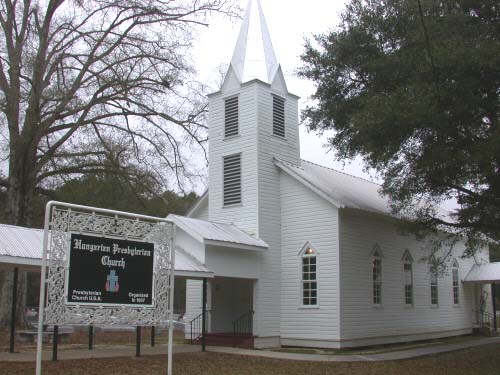 (Hungarian Presbyterian Church, 2002) 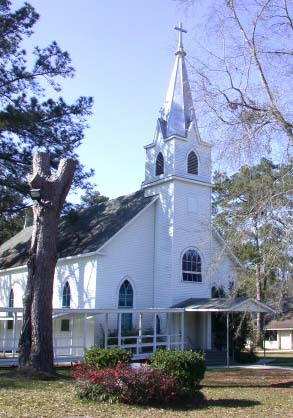 (St. Margaret Catholic Church, 2002) |
Reconnect HungaryThe Reconnect Hungary-Hungarian Birthright Program is a unique cultural, educational and social immersion program for young adults ages 18 to 28 of Hungarian heritage, born in the U.S. or Canada. Please click the link below for general information, photos, and videos of previous trips.
Hungarian Settlement MuseumThe Hungarian Settlement Museum is open on Tuesdays and the second and fourth Saturdays of the month. Hours of operation are 10:00 am to 4:00 pm. Admission is free but, donations are appreciated. For more information on the Museum, click on the link above.
|

